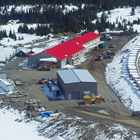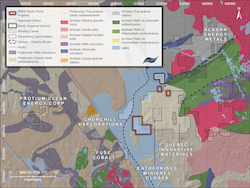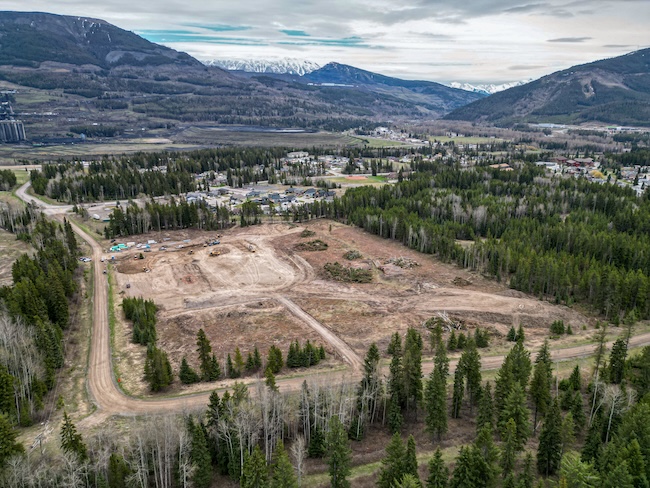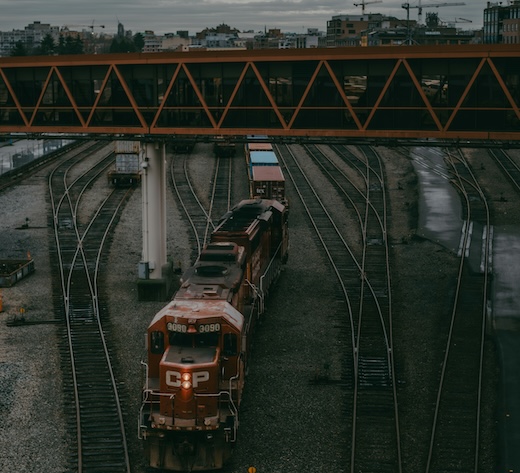Northwest British Columbia opens up

1 of 3Approximately 60 people are currently housed at Imperial Metals Corporation's Red Chris project camp, 80 km south of Dease Lake in northwestern
1 of 3Approximately 60 people are currently housed at Imperial Metals Corporation's Red Chris project camp, 80 km south of Dease Lake in northwestern British Columbia. Once fully operational in 2014, the company's open-pit copper/gold/silver mine will employ approximately 300 hourly, salaried and contract personnel, operating on a fly-in/fly-out basis on a two-week rotation. — Photo courtesy of Imperial Metals Corporation
Imperial Metals Corporation’s Steve Robertson is excited about northwest British Columbia’s Red Chris mine.
Robertson, Imperial Metals’ exploration manager, believes the proposed open-pit copper/gold/silver mine, located 80 km south of Dease Lake, has not only a solid 28-year lifespan ahead of it, but also even a potentially greater future based on recent drilling results.
B.C.’s Minister of Energy and Mines, Rich Coleman, issued a Mines Act permit for the project to the Red Chris Development Company Ltd. on May 4, 2012. Red Chris Development Company Ltd. is a wholly-owned subsidiary of Imperial Metals Corporation of Vancouver, B.C.
Robertson said in a recent interview that the mine’s 28-year approved lifespan is based on an Imperial Metals’ feasibility study update conducted in 2010. That study estimates proven and probable mineable reserves at Red Chris total 301.5 million tonnes of ore graded at 0.359 per cent copper and 0.274 grams per tonne gold. The reserves are estimated to contain 2.38 billion lb. of copper and 2.67 million oz. of gold.
But an updated resource model, included in an Imperial Metals’ 2012 technical report, shows a 103 per cent increase in measured and indicated mineral resources at Red Chris compared to a May 2010 estimate. The 2012 report includes results from 62 diamond drill holes completed since the earlier report.
In May 2010, measured and indicated resources at the mine were estimated at 619.42 million tonnes at a copper cut-off grade at 0.1 per cent. The 2012 report states measured and indicated mineral resources increased to 1.26 billion tonnes, with 8.89 billion lb. of copper and 12.9 million oz. of gold, as well as 44.59 million oz. of silver, calculated at a copper equivalent cut-off grade at 0.1 per cent.
Even though Imperial Metals has not really applied an economic model to the increased resource figures yet, Robertson is optimistic about the mine’s future.
“I think it’s a game-changer for both the province and the company,” Robertson said. “People have typically thought of British Columbia as hosting medium-sized, low-grade deposits. And Red Chris is quite clearly neither moderate in size nor low-grade. So it really has attracted some international attention.”
Although Robertson said his company expected to get a provincial Environmental Management Act permit for the project no later than May 9, 2012,construction on the mine wouldn’t begin until after that permit was issued.
He also said the first focus for construction will be to expand the mine’s camp facilities. Imperial Metals hopes to complete all building in April 2014, with production to start in mid-2014. The milling rate is to average 30,000 tonnes of ore per day.
Once operational, the mine will employ approximately 300 hourly, salaried and contract personnel, operating on a fly-in/fly-out basis on a two-week rotation. The workforce is expected to peak at 500 workers during construction.
Copper concentrate will be produced at the mine and then trucked to Stewart, B.C., to be shipped overseas for further processing.
Mine capital costs are estimated to be approximately $450 million. Project payback is estimated to be complete in 1.81 years, using January 2012 average commodity prices contained in the company’s 2012 technical report. Payback is based on a copper price of US$3.6485/lb., a gold price of US$1,656.095/oz., and a silver price of US$30.769/oz., with the Canadian dollar equalling US$0.9869.
However, operation of the mine is subject to construction of the 335-km Northwest Transmission Line (NTL) from Terrace north to Bob Quinn. BC Hydro has retained a design/build contractor for the NTL and construction began in January, with completion targeted for May 2014.
The federal and provincial governments have committed to fund the NTL, which is to be a 287-kV power line. The Red Chris Development Company Ltd. will be responsible for building a 120-km power line extension sufficient to meet the mine’s needs from the Bob Quinn hydro station northeast of the mine site.
Robertson said BC Hydro and Imperial Metals are currently in discussions about construction of the power line extension. BC Hydro would like it to be a 287-kV power line, while Imperial Metals only needs to build a 138-kV line.
“We’re not at a critical timeline at this point,” Robertson said. “We really want to make sure that that line gets constructed during the calendar year of 2013. And we can easily accommodate that.”
Engineering and procurement for mine development is proceeding, with approximately 38 per cent of the detailed engineering complete. As well, Imperial Metals has procured major long-lead items including the SAG mill, ball mill, primary crusher and truck fleet.
To encourage collaboration on the project, a Red Chris Monitoring Committee will be established to provide a forum for First Nations, government and the company to review and address environmental concerns and potential impacts throughout the mine’s life. The project is located on Tahltan First Nation traditional territory.




